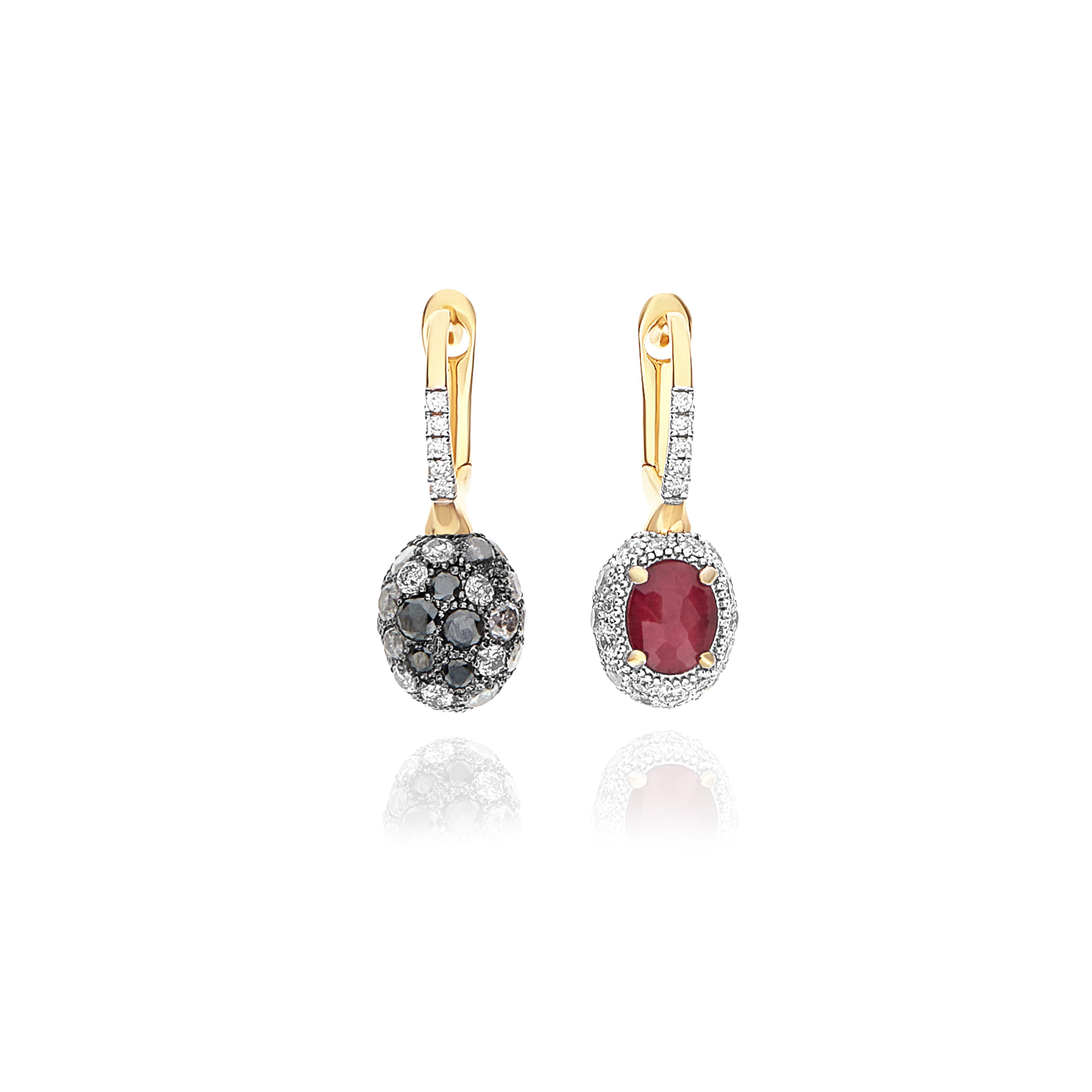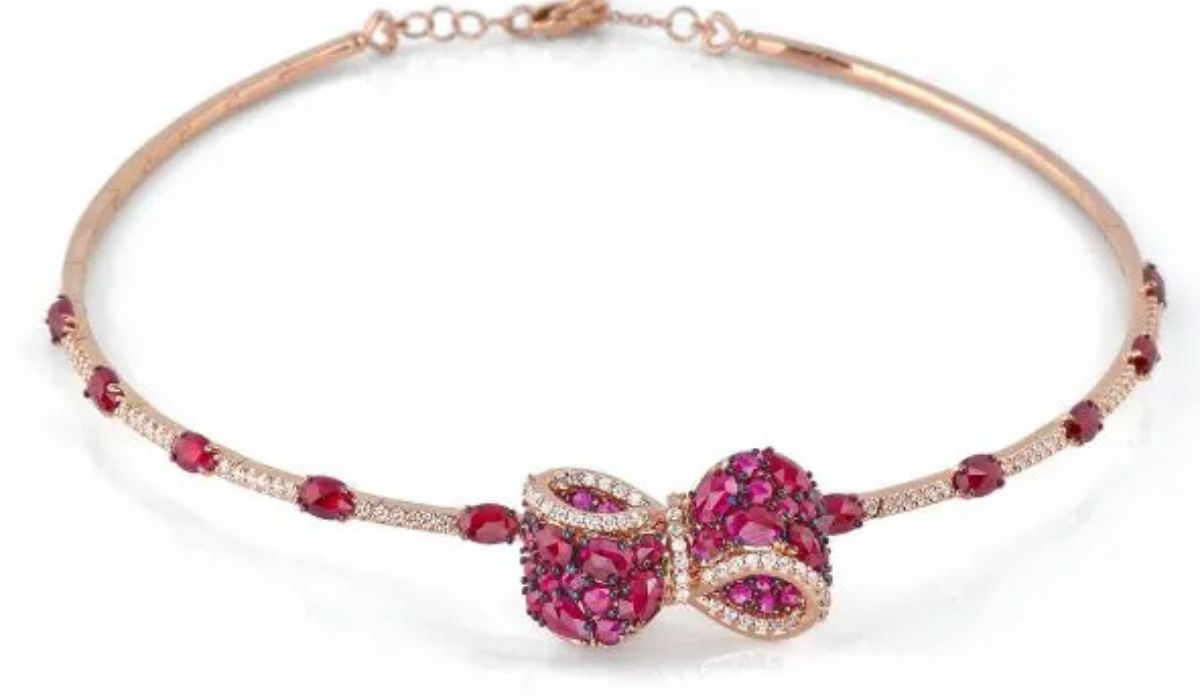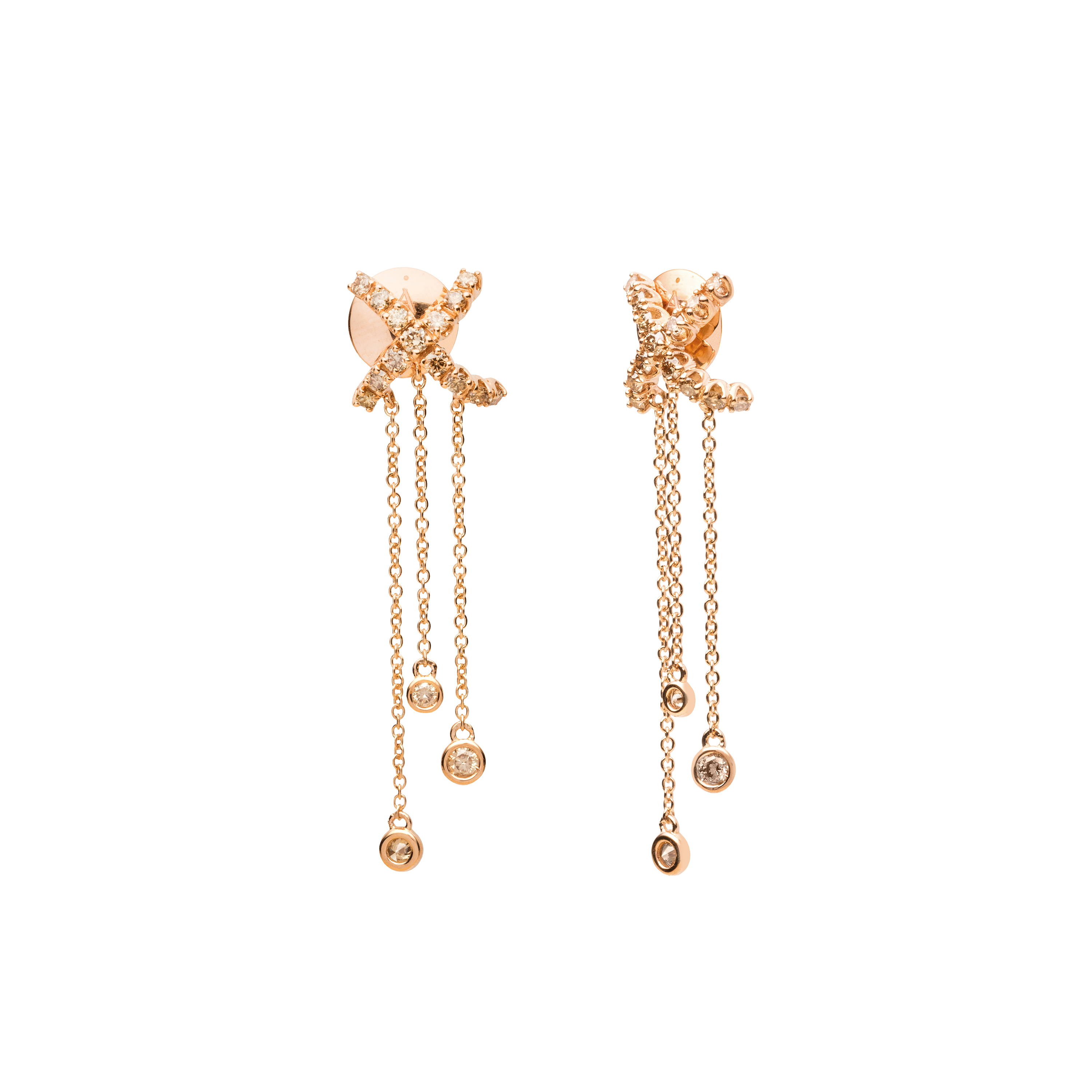«Made in Italy is not just a label or a creative passport. It is a way of being, of looking at the world, of shaping beauty through culture, craftsmanship and art. It is the ability to preserve an age-old tradition - such as Vicenza goldsmithing - and make it communicate with contemporary insight and thought. Those who choose an Italian piece of jewelry are looking for much more than an accessory: they want to wear a story, live an experience, be in contact with a universe of values. That is why Made in Italy becomes Made of Italy, because what we share is not only a product, but a way of thinking, feeling, and creating. We offer not only the place where something takes shape, but a culture that crosses borders, an identity that can be recognized at first glance, an excellence that is the envy of the world and which the world continues to choose.»

Nanis, Reverse Collection
These words, spoken by Laura Bicego, co-founder and designer of Nanis Italian Jewels, contain the intrinsic strength that moves the immense export market of Italian jewelry, which, despite the myriad of crises it has gone through in recent years, due first to the pandemic, then to the highly unstable international situation and the consequent skyrocketing price of gold and other commodities, is growing at double-digit rates, almost as if it were a separate safe-haven asset with its own particular dynamics. Numbers in hand, in 2024, the sector set an all-time record with a 49% increase compared to the previous year, which had already achieved a remarkable performance with exports increasing by 11.1% to a value of 10.9 billion euros, a figure that grew to 13.7 in 2024. And even more strikingly, the biggest increase (+12.1%) was in gold jewelry, a sign that the added value of being Italian overcomes every other obstacle, such as the mind-boggling prices of the most sought-after metal, which has risen 186.72% in the past 10 years, fluctuating from a base of €31.11 to reach €96.59 per gram between March and April 2025. Looking at this trend in even more detail, the goldsmith district of Arezzo gave the best performance and dominated the scene with exports more than doubling (+119%) to €7.7 billion, driven by Turkish demand rising from €922 million to €5.3 billion, which was followed by a +9.7% increase in the United Arab Emirates. The sector’s steady positive trend has only been dampened by the announcement of US tariffs with a 9.1% drop in the first quarter of this year. However, the luxury segment seems to have been left unscathed, as evidenced by the striking case of Richemont, a Geneva-based Swiss holding company, which saw a +6% year-on-year increase in the same period, equivalent to +5.4 billion euros, thanks mainly to the jewelry segment, led by Buccellati, Cartier, Van Cleef & Arpels and Vhernier, which showed double-digit growth for the third consecutive quarter (+11%), compared to declines in fashion and accessories (-1%) and watches (-7%). Precisely as a result of the recent tariffs, sales in the U.S. were also down (-10.7%) although it is still a crucial market with more than €1 billion in imports. In regard to the States, the fact that everything Italian is much-coveted on that side of the ocean is confirmed by those who, like the historic Valenza-based brand Giovanni Ferraris, have enjoyed a loyal clientele in that market for years.

Giovanni Ferraris, Necklace in rose gold with diamonds and rubies
«In the United States, our clients look to us to understand how to match accessories with clothes, to grasp the secrets of an elegance that appears spontaneous but is the result of a deep knowledge of style,» says creative director Katia Olivucci. «There is an interest not only in individual items of jewelry, but in how it fits into a complete outfit, how it helps define a look and express a personality. We are almost trendsetters from which to draw ideas to replicate that casual elegance that sets us apart. When one speaks of Italy abroad, the perception goes far beyond the simple geographic origin of a product. It evokes a true “Italian style,” which is synonymous with intrinsic beauty and an almost innate elegance that permeates every aspect of our culture. We have mastery in design and in the choice of materials, which translates into pieces that are not just objects, but expressions of refined taste and an ability to innovate while maintaining a link to tradition. Particularly in the jewelry sector, the perception of Made in Italy varies and is enriched according to different cultures. For example, in the Asian area, Italian jewelers are often considered true artists. There is a deep appreciation for creative ingenuity, for the ability to transform precious materials into unique works of art, where the value does not lie purely in the carats or metal, but in the idea, the craftsmanship and the story that each piece englobes. Our jewelry is judged for its originality, its ability to evoke emotions and the flair that only an artist can instill. In the Middle East, however, there is a deep trust and admiration for our craftsmanship. It is perceived as a guarantee of beauty that goes beyond the latest fashion, an investment in something inherently beautiful and well-made, destined to last and retain its value. There is a quest for timeless beauty that transcends ephemeral trends.» Olivucci's words are echoed by Laura Bicego, who adds, «We Italians do not follow fashions: we cultivate a language. The language of elegance that comes from within, authentic, capable of telling who we are. This search for meaning and authenticity is recognized as much in Italy as abroad. In the United States and particularly in South America, I have been met with curious and profound looks, a sincere attention to what is made with soul, time, and passion. Those who choose an Italian piece of jewelry are looking for much more than an accessory: they want to wear a story, to live an experience, to be in contact with a universe of values. For example, I personally, even in the choice of stones, which is never random, look for that “imperfect perfection” that I love so much: inclusions, rutiles and natural veins - little traits of soul that make each creation different, never standard.»

Antonini Milano, Cortina Collection
An expert on the Far East is Sergio Antonini, creative director of Antonini Milano, one of the most popular Italian brands with a long-standing presence in the land of the Rising Sun: «In the high-end clothing and jewelry segments, Japan lacks innovative and creative production like that of Italy and France, so we are a constant inspirational and aspirational reference point. I have been traveling in Japan for many years, and when I meet someone and they realize I am Italian, their eyes shine. Made in Italy also means offering a product that is not standard and not too “common”: if Japanese ladies go out to dinner with their husbands and friends and there is a woman wearing the same jewelry or the same jacket at their table, it is seen as an unacceptable disgrace and they will never wear it again. That is why capsules and limited editions flourish and succeed in Japan. Japanese ladies like to dream. Chinese customers are the exact opposite. They are looking for iconic and recognizable products in order to be “admitted” and “accredited” into the circle of those who can afford that particular brand (jewelry, cars, clothes, accessories, etc..). The Japanese do a lot of research which is a great opportunity for our small companies. The key is to be able to promote yourself in the right way. As Antonini Milano, we define ourselves as a “Milanese” jeweler because of our simple and clean lines related to the tradition of Milanese design and architecture, unlike Italian jewelry that is much more decorative, and this is a differentiating advantage that we are recognized for. Made in Italy and Made of Milan.»





